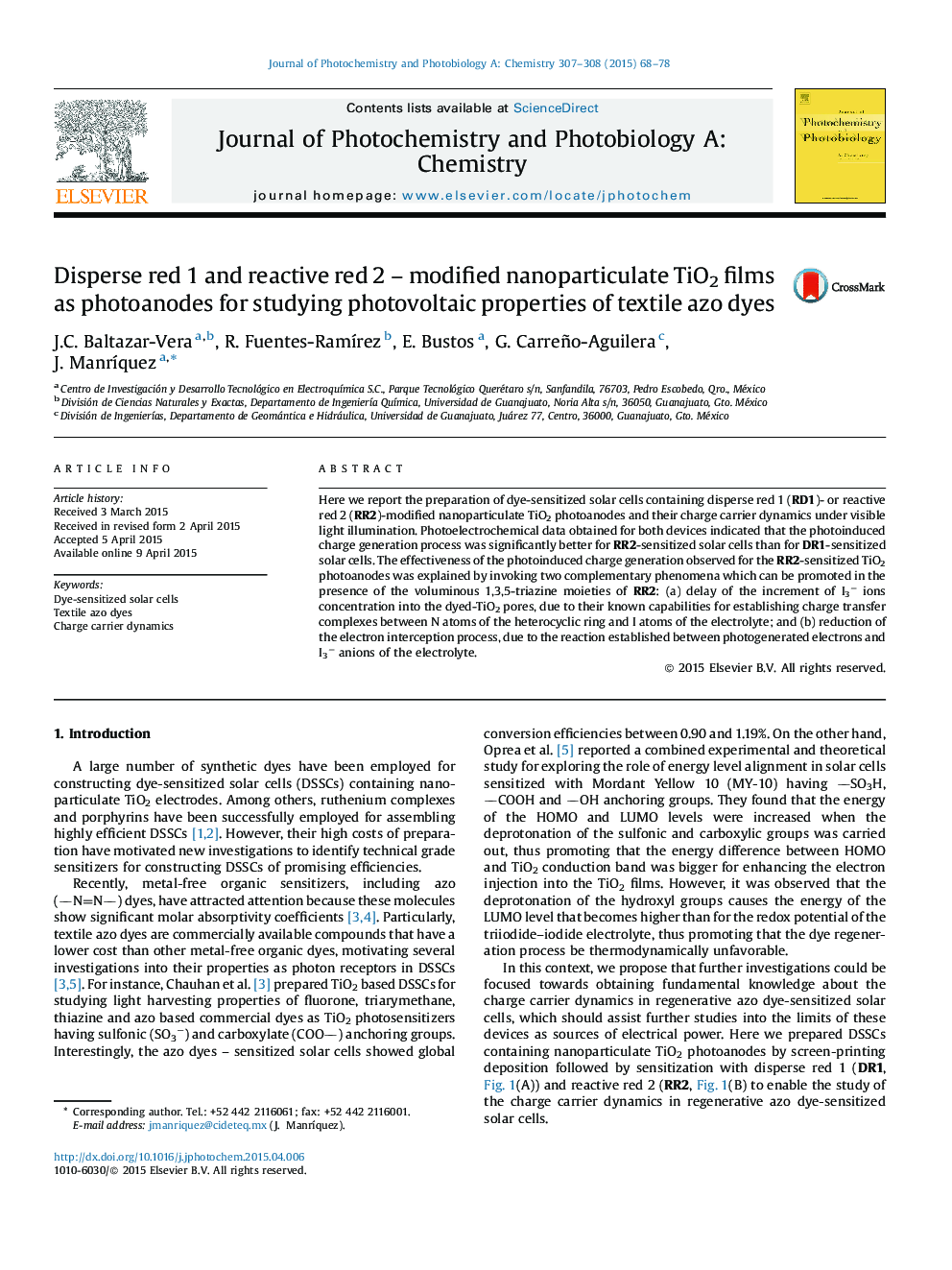| Article ID | Journal | Published Year | Pages | File Type |
|---|---|---|---|---|
| 26037 | Journal of Photochemistry and Photobiology A: Chemistry | 2015 | 11 Pages |
•Disperse red 1 and reactive red 2 azo based dyes containing nitro and sulfonate anchoring groups were utilized for preparing regenerative TiO2 based dye-sensitized solar cells.•Open circuit potential and fill factor were significantly higher for reactive red 2 – sensitized solar cells.•Lifetimes for the electron interception reaction, electron recombination, and the electron transport through the reactive red 2 – sensitized TiO2 films were 2, 4 and 6 times higher than for the disperse red 1 – sensitized TiO2 films, respectively.
Here we report the preparation of dye-sensitized solar cells containing disperse red 1 (RD1)- or reactive red 2 (RR2)-modified nanoparticulate TiO2 photoanodes and their charge carrier dynamics under visible light illumination. Photoelectrochemical data obtained for both devices indicated that the photoinduced charge generation process was significantly better for RR2-sensitized solar cells than for DR1-sensitized solar cells. The effectiveness of the photoinduced charge generation observed for the RR2-sensitized TiO2 photoanodes was explained by invoking two complementary phenomena which can be promoted in the presence of the voluminous 1,3,5-triazine moieties of RR2: (a) delay of the increment of I3− ions concentration into the dyed-TiO2 pores, due to their known capabilities for establishing charge transfer complexes between N atoms of the heterocyclic ring and I atoms of the electrolyte; and (b) reduction of the electron interception process, due to the reaction established between photogenerated electrons and I3− anions of the electrolyte.
Graphical abstractFigure optionsDownload full-size imageDownload as PowerPoint slide
